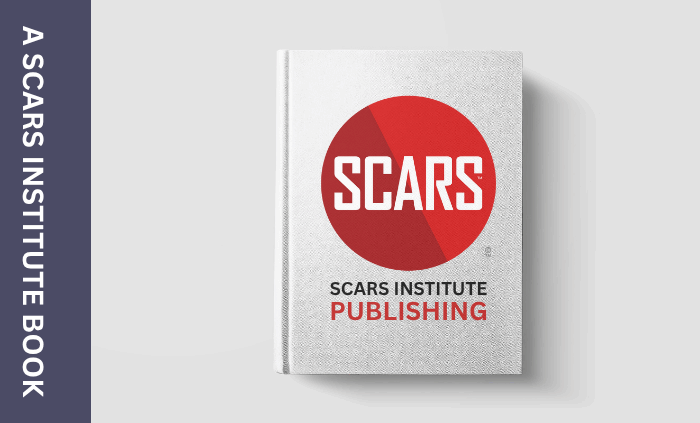IoT Toys/Internet Connected Toys – An Ever Growing Danger For Children
Author:
• SCARS Editorial Team – Society of Citizens Against Relationship Scams Inc.
The Unseen Dangers of IoT Toys: Navigating the Digital Playground with Caution
In today’s technology-driven world, the allure of Internet of Things (IoT) devices extends far beyond smartphones and smart homes. Even our children’s toys have become interconnected, often equipped with cameras, microphones, and location-tracking capabilities. While these features may seem appealing, they also introduce a realm of potential dangers that parents and guardians must carefully consider.
The emergence of IoT Toys (Internet of Things toys) offers exciting possibilities but also harbors significant dangers, particularly when it comes to children’s safety and privacy. These playthings, designed to connect and interact with the internet, present a range of risks that need critical consideration.
IoT toys, equipped with cameras, microphones, and sensors, often collect sensitive data, including audio recordings and images of children. Concerns about the privacy of this data loom large. Instances of data breaches or unauthorized access to personal information pose serious threats, potentially exposing children to exploitation or identity theft.
IoT Toys Privacy Concerns at the Forefront
IoT toys often collect a significant amount of data about children, including their voices, playtime activities, and even their surroundings. This information can be stored and analyzed by toy manufacturers, third-party companies, or even hackers, raising concerns about privacy violations and potential misuse.
The use of cameras and microphones in IoT toys raises particular concerns. These features can enable real-time surveillance of children, potentially exposing them to undesired observation and even manipulation. Parents should carefully consider the purpose and potential consequences of these features before allowing their children to use these toys.
IoT Toys Hacking Vulnerabilities: A Threat to Children’s Safety
The interconnected nature of IoT toys makes them vulnerable to hacking attempts. Cybercriminals can exploit security flaws to gain unauthorized access to these devices, potentially allowing them to spy on children, manipulate their interactions with the toy, or even install malicious software.
The consequences of a hacked IoT toy can range from privacy breaches to physical harm. Hackers could use the toy’s microphone to eavesdrop on conversations, or they could exploit the toy’s control systems to cause it to malfunction or even harm the child playing with it.
IoT Devices and Working From Home
WARNING: It is recommended that you do not have ANY IoT devices where you work from home. This includes Alexa, and everything else.
These devices watch and listen to potentially EVERYTHING and can compromise the security of your business, observe trade secrets and confidential information, and even violate NDAs. They represent a significant security risk and the owner of the device is responsible for any breaches caused by them.
According to PIRG Education Fund:
Smart toys are becoming more common, and an increase in concerns about them spying on children has coincided with that, according to a new report from the U.S. PIRG Education Fund.
In its “Trouble in Toyland” report released Thursday, the organization explained that smart toys “can incorporate various technologies, like cameras, microphones and sensors, as well as artificial intelligence capabilities and connectivity through the internet or Bluetooth.” It specifically flagged some risks that it said parents and their children could see arise.
IoT Toys Physical and Emotional Harm
Beyond privacy concerns, the direct impact on children’s safety cannot be overlooked. Hackers infiltrating IoT toys can manipulate them to deliver harmful content or commands, potentially causing emotional distress or even physical harm. Unauthorized access to microphones or cameras could expose children to inappropriate content or allow strangers to observe and interact with them without consent.
IoT Toys Undesired Observation and Manipulation
IoT toys’ ability to collect data also raises concerns about how this information might be used. Companies might gather and analyze data for targeted advertising or sell it to third parties without parental consent. This unauthorized monitoring and profiling of children can lead to intrusive marketing tactics or unwanted influence on children’s behavior and preferences.
Protecting Children in a Digital World
To mitigate these risks, stringent measures are necessary. Parents must thoroughly research IoT toys, scrutinizing the manufacturer’s privacy policies, security protocols, and the toy’s data collection capabilities before purchase. Regularly updating software and firmware is crucial to ensure devices have the latest security patches.
Additionally, parents should consider disabling unnecessary features like cameras and microphones, limiting data shared with the toy, and monitoring children’s interactions with IoT devices closely. Encouraging open communication with children about the importance of privacy and online safety is also imperative.
To safeguard children from the potential dangers of IoT toys, parents and guardians should take proactive measures:
- Research and Select Toys Carefully: Research the manufacturer’s privacy policies and security practices before purchasing IoT toys. Choose toys from reputable companies with a strong commitment to child safety and data protection.
- Limit Connectivity: When possible, disable unnecessary features such as cameras, microphones, and location tracking. Consider using these toys in offline mode whenever possible to minimize data collection and reduce the risk of hacking.
- Regularly Update Software: Keep IoT toys up to date with the latest software patches to address any known security vulnerabilities. This can help reduce the risk of hacking and ensure that the toy’s features are functioning properly.
- Educate Children About Online Safety: Teach children about the importance of online privacy and the potential dangers of sharing personal information or using unfamiliar devices. Encourage them to come to you with any concerns or suspicious activity.
- Establish Clear Guidelines: Set clear guidelines for children’s use of IoT toys, including limitations on screen time, appropriate online behavior, and the types of information they should share.
- Monitor Toy Usage: Regularly monitor children’s use of IoT toys and be aware of any unusual behavior or changes in the toy’s functionality.
- Report Suspicious Activity: If you suspect that an IoT toy has been hacked or is posing a risk to your child, report the issue to the manufacturer and law enforcement immediately.
By adopting a cautious and informed approach to IoT toys, parents and guardians can help ensure that their children’s playtime remains safe, fun, and free from unnecessary risks.
Industry and Regulatory Action
The responsibility also falls on toy manufacturers and regulatory bodies to prioritize children’s safety and privacy. Implementing stringent security measures, transparent data collection policies, and robust encryption are paramount. Regular security audits and swift response to identified vulnerabilities are necessary to safeguard against potential threats.
Furthermore, regulatory bodies must establish comprehensive guidelines and standards for IoT toys to ensure compliance with stringent security and privacy requirements. These regulations should emphasize transparent data handling practices, parental control features, and mechanisms to report vulnerabilities or breaches.
Summary
The allure of IoT toys brings an array of opportunities for fun and learning. However, the inherent risks demand careful attention. Protecting children from privacy infringements, cyber threats, and potential harm stemming from IoT toys necessitates a concerted effort from parents, manufacturers, and regulatory bodies. With vigilance, education, and stringent measures in place, we can foster an environment where innovation in play is balanced with robust safety and privacy standards.
More:
- Talking To Kids/Youth About Online Risk [VIDEO] (scamsnow.com)
- Teens And Young Adults: Now A Major Target Of Scammers (scamsnow.com)
- SCARS 20 Rules For Online Safety! 2023/2024 (romancescamsnow.com)
- ONLINE SAFETY & EDUCATIONAL ORGANIZATIONS (romancescamsnow.com)
- Online Safety – Important For Working From Home – A Free SCARS Guide 2023 (romancescamsnow.com)
- Online Safety: Identifying Hoaxes and Urban Legends (romancescamsnow.com)
- SCARS™ Online Safety – COPPA Regulation: A Few Tips To Keep Your Child Safe Online (romancescamsnow.com)
SCARS Resources:
- For New Victims of Relationship Scams newvictim.AgainstScams.org
- Subscribe to SCARS Newsletter newsletter.againstscams.org
- Sign up for SCARS professional support & recovery groups, visit support.AgainstScams.org
- Find competent trauma counselors or therapists, visit counseling.AgainstScams.org
- Become a SCARS Member and get free counseling benefits, visit membership.AgainstScams.org
- Report each and every crime, learn how to at reporting.AgainstScams.org
- Learn more about Scams & Scammers at RomanceScamsNOW.com and ScamsNOW.com
- Global Cyber Alliance ACT Cybersecurity Tool Website: Actionable Cybersecurity Tools (ACT) (globalcyberalliance.org)
- Self-Help Books for Scam Victims are at shop.AgainstScams.org
- Donate to SCARS and help us help others at donate.AgainstScams.org
- Worldwide Crisis Hotlines: International Suicide Hotlines – OpenCounseling : OpenCounseling
- Campaign To End Scam Victim Blaming – 2024 (scamsnow.com)
-/ 30 /-
What do you think about this?
Please share your thoughts in a comment below!
More ScamsNOW.com Articles
-/ 30 /-
What do you think about this?
Please share your thoughts in a comment above!
SCARS LINKS: AgainstScams.org RomanceScamsNOW.com ContraEstafas.org ScammerPhotos.com Anyscam.com ScamsNOW.com
reporting.AgainstScams.org support.AgainstScams.org membership.AgainstScams.org donate.AgainstScams.org shop.AgainstScams.org
youtube.AgainstScams.org linkedin.AgainstScams.org facebook.AgainstScams.org
ARTICLE RATING
TABLE OF CONTENTS
CATEGORIES
MOST POPULAR COMMENTED ARTICLES
POPULAR ARTICLES
U.S. & Canada Suicide Lifeline 988
![NavyLogo@4x-81[1]](https://scamsnow.com/wp-content/uploads/2025/04/NavyLogo@4x-811.png)
ARTICLE META
WHAT PEOPLE ARE TALKING ABOUT LATEST SITE COMMENTS
See Comments for this Article at the Bottom of the Page
on Substance Abuse Susceptibility And Scam Victims – 2024: “It is understandable how some would feel that alcohol or substance abuse would be helpful in handling their feelings after…” Jul 1, 20:36
on Scam Victims Use Work To Avoid Healing: “The last 6 years have been the most difficult of my life. The pandemic, having both parents in the hospital…” Jun 29, 18:38
on Entitlement Mentality And How Scam Victims Often Lose Their Path To Recovery – 2024: “Thank you for this discussion of entitlement. I can see from the descriptions listed that I have not felt entitlement.…” Jun 29, 18:22
on Samurai Wisdom and Rituals for Clearing the Mind After Scam Trauma – 2025 – [VIDEOS]: “A great guide on how to move forward in our recovery process with a calm mind, cleansed on an ongoing…” Jun 28, 07:34
on Delayed Gratification and Patience in Scam Victim Recovery – 2025 – [VIDEOS]: “We want to recover quickly and… we make new mistakes. How not to speed up the recovery process, how to…” Jun 28, 06:41
on The Unique Injury Of Betrayal Trauma On Scam Victims – 2024: “Primarily because you did not see it coming” Jun 27, 23:57
on Changes In A Scam Victim’s Life: “I really detest the way my trust in others has been affected by the scamming I went through. I used…” Jun 27, 14:47
on The Unique Injury Of Betrayal Trauma On Scam Victims – 2024: “Betrayal Trauma is the worst feeling ever. Why does it seem so much worse when a scammer does that to…” Jun 27, 14:34
on EMDR Therapy For Scam Victims’ Trauma – A Part Of The Recovery Process For Many – 2024: “Very comprehensive article explaining all aspects of EMDR. I’d only heard of it before and now I have a much…” Jun 26, 19:01
on Forgiving Yourself After Surviving a Romance or Investment Scam – 2025: “Thank you for this valuable article. Self-forgiveness was for me the biggest step that led to my recovery. That also…” Jun 26, 17:28
on Counseling And Your Native Language: “These points make perfect sense. I can’t imagine trying to express complex emotions in a second language. I realize many…” Jun 26, 16:05
on Thought-Terminating Cliches – How What You and Others Say Stops Critical Thinking and Recovery for Scam Victims – 2025: “I didn’t realize that these “innocent phrases” clichés ending thoughts, can have such effect / negative -inhibiting / on our…” Jun 26, 14:48
on Scam Victim Resistance In Support Groups Therapy Or Counseling Can Destroy Opportunities For Recovery – 2024: “Working with either a support group or therapist to me means a self commitment to actively participating in the therapy.…” Jun 24, 21:01
on ‘I Just Want To Forget It’ – Denial & Avoidance Are Natural But Will Not Help Scam Victims On Their Path To Recovery From Scams – 2024: “My financial loss, the shock and betrayal of the crime ending all combined to fray my nerves and spend hours…” Jun 24, 20:10
on You Hate Being Told What To Do? How Your Rebellious Mentality Can Sabotage Your Recovery – 2025: “I am a bit of a rebel, and the moment someone tells me to do something, worse, does it even…” Jun 24, 15:04
on You Hate Being Told What To Do? How Your Rebellious Mentality Can Sabotage Your Recovery – 2025: “You are very welcome” Jun 24, 03:01
on You Hate Being Told What To Do? How Your Rebellious Mentality Can Sabotage Your Recovery – 2025: “This is a great article, which makes perfect sense as to why anyone would resist the help offered to them.…” Jun 23, 20:01
on Scam Victims’ Responsibilities – 2021 [Updated 2025]: “Thank you for this article. As I continue my journey, I focus on the here and now and let the…” Jun 21, 16:26
on Scam Victims Avoid Or Escape The Aftermath Of Scams – How Denial And Distraction Avoid Confronting Reality – 2024: “In the earliest days after my crime I felt powerless, helpless and weak. I had been through so much in…” Jun 21, 14:46
Important Information for New Scam Victims
Please visit www.ScamVictimsSupport.org – a SCARS Website for New Scam Victims & Sextortion Victims
SCARS Institute now offers a free recovery program at www.SCARSeducation.org
Please visit www.ScamPsychology.org – to more fully understand the psychological concepts involved in scams and scam victim recovery
If you are looking for local trauma counselors, please visit counseling.AgainstScams.org
If you need to speak with someone now, you can dial 988 or find phone numbers for crisis hotlines all around the world here: www.opencounseling.com/suicide-hotlines
Statement About Victim Blaming
Some of our articles discuss various aspects of victims. This is both about better understanding victims (the science of victimology) and their behaviors and psychology. This helps us to educate victims/survivors about why these crimes happened and not to blame themselves, better develop recovery programs, and help victims avoid scams in the future. At times, this may sound like blaming the victim, but it does not blame scam victims; we are simply explaining the hows and whys of the experience victims have.
These articles, about the Psychology of Scams or Victim Psychology – meaning that all humans have psychological or cognitive characteristics in common that can either be exploited or work against us – help us all to understand the unique challenges victims face before, during, and after scams, fraud, or cybercrimes. These sometimes talk about some of the vulnerabilities the scammers exploit. Victims rarely have control of them or are even aware of them, until something like a scam happens, and then they can learn how their mind works and how to overcome these mechanisms.
Articles like these help victims and others understand these processes and how to help prevent them from being exploited again or to help them recover more easily by understanding their post-scam behaviors. Learn more about the Psychology of Scams at www.ScamPsychology.org
SCARS INSTITUTE RESOURCES:
If You Have Been Victimized By A Scam Or Cybercrime
♦ If you are a victim of scams, go to www.ScamVictimsSupport.org for real knowledge and help
♦ Enroll in SCARS Scam Survivor’s School now at www.SCARSeducation.org
♦ To report criminals, visit https://reporting.AgainstScams.org – we will NEVER give your data to money recovery companies like some do!
♦ Follow us and find our podcasts, webinars, and helpful videos on YouTube: https://www.youtube.com/@RomancescamsNowcom
♦ Learn about the Psychology of Scams at www.ScamPsychology.org
♦ Dig deeper into the reality of scams, fraud, and cybercrime at www.ScamsNOW.com and www.RomanceScamsNOW.com
♦ Scam Survivor’s Stories: www.ScamSurvivorStories.org
♦ For Scam Victim Advocates visit www.ScamVictimsAdvocates.org
♦ See more scammer photos on www.ScammerPhotos.com
You can also find the SCARS Institute on Facebook, Instagram, X, LinkedIn, and TruthSocial
Psychology Disclaimer:
All articles about psychology and the human brain on this website are for information & education only
The information provided in this and other SCARS articles are intended for educational and self-help purposes only and should not be construed as a substitute for professional therapy or counseling.
Note about Mindfulness: Mindfulness practices have the potential to create psychological distress for some individuals. Please consult a mental health professional or experienced meditation instructor for guidance should you encounter difficulties.
While any self-help techniques outlined herein may be beneficial for scam victims seeking to recover from their experience and move towards recovery, it is important to consult with a qualified mental health professional before initiating any course of action. Each individual’s experience and needs are unique, and what works for one person may not be suitable for another.
Additionally, any approach may not be appropriate for individuals with certain pre-existing mental health conditions or trauma histories. It is advisable to seek guidance from a licensed therapist or counselor who can provide personalized support, guidance, and treatment tailored to your specific needs.
If you are experiencing significant distress or emotional difficulties related to a scam or other traumatic event, please consult your doctor or mental health provider for appropriate care and support.
Also read our SCARS Institute Statement about Professional Care for Scam Victims – click here
If you are in crisis, feeling desperate, or in despair, please call 988 or your local crisis hotline.
More ScamsNOW.com Articles
A Question of Trust
At the SCARS Institute, we invite you to do your own research on the topics we speak about and publish. Our team investigates the subject being discussed, especially when it comes to understanding the scam victims-survivors’ experience. You can do Google searches, but in many cases, you will have to wade through scientific papers and studies. However, remember that biases and perspectives matter and influence the outcome. Regardless, we encourage you to explore these topics as thoroughly as you can for your own awareness.















![scars-institute[1]](https://scamsnow.com/wp-content/uploads/2025/04/scars-institute1.png)
![niprc1.png1_-150×1501-1[1]](https://scamsnow.com/wp-content/uploads/2025/04/niprc1.png1_-150x1501-11.webp)
